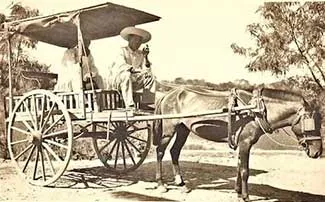Cuenca, Batangas in the 19th Century, as Described by a Spanish Historian
This article continues our series dedicated to showing how the towns of Batangas were like in the nineteenth century, as described by the Spanish former government official and historian Manuel Sastron in his 1895 book “Batangas y Su Provincia1.” Presumably, the information that Sastron wrote in his book was either observed or collected in the years preceding the publication of the book.
First, Sastron gave a physical description of the town of Cuenca, which he said was established on 11 August 1875, just ten years prior to his book’s publication. It was located, he wrote, at the foot of Mt. Macolot, bounded to the north by Lake Bombon (presently Taal Lake); to the east by Villa de Lipa and the town of San Jose; and to the west by the town of Bauan.
It was approximately 20 kilometers from the capital town of Batangas and at the time had a population of 6,624. In contrast, as per the 2015 Philippine Census, the town’s population had grown to 32,7832.
Sastron decribed Cuenca as a “beautiful town” with eight barrios, the largest of which had 2,425 inhabitants. These barrios were scattered over both flat and hilly terrain, in places lush with vegetation. He enumerated the barrios as Macolot, San Felipe, Dalipit, Bungahan, Emmanuel, Labac, Ibabao and Dita.
Three rivers ran through Cuenca, Sastron wrote: the Culit, Salindaya and the Subuquin, all of which originated close to the Lake of Bombon. A short distance from the town proper, at the foot of the Macolot, could be found the source of the Catangan stream. Presumably a spring, Sastron described this as “a most pleasant place.”
Like Lipa, Cuenca also benefited from the nineteenth century coffee boom; and also felt the economic impact of its decline. Its farmers, Sastron wrote, planted their fields with rice, corn, sugarcane, monggo, cacao, abaca, tobacco and a wide variety of tubers and leguminous crops; but they also mostly just produced for local consumption. The fields, Sastron noted, were not irrigated and were, thus, dependent on rainfall.
 |
| A calesa, in a typical scene of the 19th to early 20th century Philippines. Image credit: New York Public Library. |
Cuenca, according to Sastron, enjoyed an almost year round pleasant climate, with the temperature rarely exceeding 30ºC except in the three months of summer. One had to wear warm clothes until 9 or 10 in the morning.
The town’s insulation against temperature fluctuations, he observed, made it a healthy place to stay. Because of this, the wealthy families of Manila often travelled the 106 kilometer distance to vacation there for peace, health and solitude.
The healthy conditions in Cuenca were such that it was conducive to population growth. In 1893, Sastron cited as an example, there were 283 births as opposed to just 145 deaths, for a population growth of 138. This may not sound a lot by present day standards; but this was still an era when many towns did not even have doctors, let alone medical facilities.
As soon as the railway service from Manila to Taal via Batangas was completed, Sastron conjectured, Cuenca was destined to become a “place of recreation” and a refuge to recover from the stresses brought along by city life.
Sastron noted the ease with which houses could be built of “good wood.” There was an abundance of granite and other hard stones. Wages were cheap and people were very peaceful.
This was not to say that the people were not courageous, for they had defended their properties with heroism when the town was attacked by armed brigands in previous years. Sastron predicted that wealthy families in Manila would soon start to seek refuge away from the heat and stress of city living for three months each year in Cuenca.
At the time of Saston’s writing of his book, Cuenca had a young priest named Fr. Mariano Calleja, whom he described as “full of zeal and activeness.” His presence, he wrote, could only be to the benefit of the moral interests of the simple folks of Cuenca.
Cuenca’s church, along with the convent near it, were built of solid materials, Sastron observed. One Fr. Dionisio Ibañez, who was responsible for the construction of an extension to the convent, was also responsible for the setting up of a town cemetery far enough from the population centers for its location to be hygienic.
Education was something upon which Cuenca could be improved, for there were no public schools, according to Sastron. Neither did the place have a court house of its own.
Every year, he wrote, the town of Cuenca observed a “solemn religious feast” in honor of its patron, San Isidro Labrador.
2 Philippine Census of 2015, online at the Philippine Statistics Authority.
